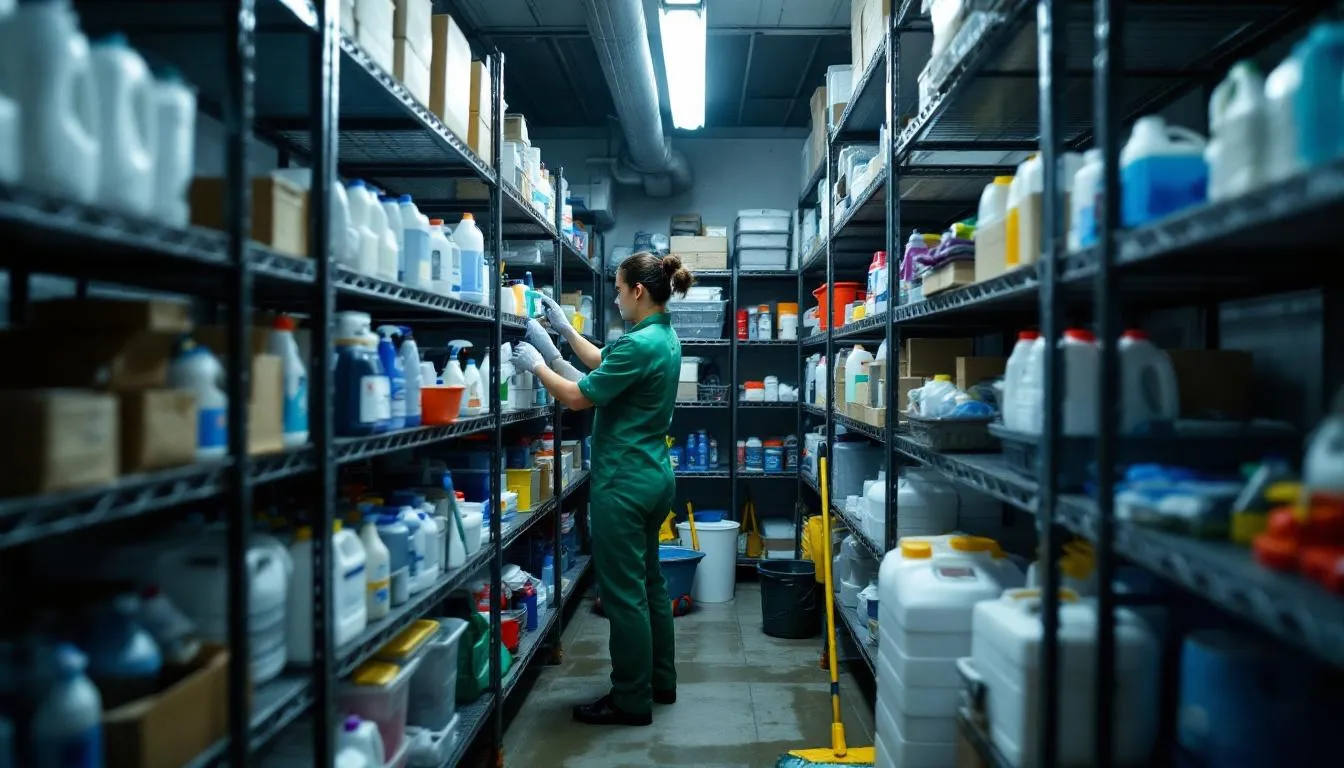6 Hotel Revenue Leaks: Identify & Stop Profit Losses
 Mika Takahashi
Mika Takahashi Mika Takahashi
Mika TakahashiEvery single day, hotels unknowingly lose thousands of dollars through revenue leaks that could easily be prevented. While you’re busy focusing on generating profitable revenue and filling rooms, hidden inefficiencies quietly chip away at your hotel’s financial health. It’s shocking, but the hospitality industry experiences an average revenue leakage of 14.9% across all sectors—a huge hit that can mean the difference between thriving and just getting by in today’s competitive market.
Understanding and tackling hotel revenue leaks isn’t just about plugging financial holes; it’s about changing the way you think about profit-oriented revenue management. Since profit margins in hospitality tend to be surprisingly slim compared to other industries, every lost dollar due to operational inefficiencies is a real blow to your bottom line.
This detailed guide will walk you through the most common sources of revenue leakage in hotel operations and offer practical strategies to safeguard your hotel’s profitability. From unbilled services to pricing inefficiencies, we’ll show you how data-driven decisions and systematic approaches can turn hidden revenue leaks into lasting profit gains.

Hotel revenue leaks are essentially the gap between the revenue your hotel should have captured based on the services you provided and what actually shows up in your financial records. Unlike typical operational expenses, revenue leakage happens when your hotel delivers value to guests but doesn’t collect payment for it—basically giving away services that should be contributing to your hotel revenue.
Revenue leakage is different from traditional profit challenges. While marketing and operational expenses are planned costs, profit leaks happen through unintended gaps in your revenue capture process. These leaks can come from unbilled services, pricing mistakes, inventory waste, or system glitches that stop proper charges from being collected.
The impact of these leakages hits especially hard because hotels operate with thin profit margins. When you’re working with marginal profit levels, even a small percentage of lost potential revenue can push your property from profit into loss. Regular financial audits often reveal that many hotels lose a substantial amount each year through preventable leakage.
Here are some common examples of hotel revenue leaks:
These situations represent revenue your hotel earned by providing services but never actually collected. Unlike customer acquisition costs or planned promotional discounts, these revenue leaks don’t offer any strategic benefit—they just quietly drain profits without adding value.
Unbilled services are one of the biggest culprits behind hotel revenue leaks, especially in properties that offer a wide range of amenities and services. When hotels go beyond just room revenue to include restaurants, spas, business centers, and recreational facilities, the complexity of capturing charges grows exponentially, creating plenty of chances for revenue to slip through the cracks.
Take spa facilities, for example. Treatment room utilization often suffers from incomplete billing because therapists focus more on delivering services than on administrative tasks. Manual processes for recording treatments, product sales, and tips open multiple doors for charges to be missed or applied incorrectly. Without integrated systems that connect spa operations directly to the main billing platform, hotels frequently find that a significant chunk of their spa revenue goes uncollected.
Food and beverage operations are another major source of unbilled service leakage. Room service orders communicated verbally between guests and staff might not always get properly charged, especially during busy times when service teams prioritize speed over paperwork. Bar tabs from poolside service, minibar consumption, and special dietary requests also often fall through the cracks due to incomplete documentation.
To fight back against unbilled service leaks, successful hotels put several key strategies in place:
Automated billing integration: Modern property management systems should automatically capture charges from every service point. When spa software, restaurant POS systems, and minibar sensors connect directly to guest folios, human error in charge posting drops dramatically.
Service confirmation protocols: Staff training should emphasize verifying charges at the moment of service delivery. Simple checklists can help ensure every interaction includes proper billing documentation before the guest finishes.
Real-time monitoring systems: Daily audits help catch unbilled services before guests check out. Housekeeping reports on minibar use, spa appointment logs, and restaurant checks should be cross-checked against guest folios continuously rather than waiting for monthly reviews.

Cross-department communication: Protecting revenue requires coordination between service teams and billing. When housekeeping finds missing towels, spa staff provides extra services, or maintenance handles guest requests, these interactions need to trigger billing processes automatically.
Addressing unbilled services doesn’t just recover immediate revenue. Hotels that capture all service charges systematically often see improvements across their entire operations, as staff become more attentive to guest details and overall efficiency improves.
Pricing inefficiencies are another major source of hotel revenue leaks that often go unnoticed. Even though hotels invest heavily in revenue management systems and competitor pricing analysis, many still lose significant revenue due to inconsistent rate application, poor dynamic pricing execution, and failure to optimize their hotel’s total revenue mix across all channels.
The biggest pricing leak happens when hotels don’t use effective dynamic pricing during high-demand periods. Keeping room rates static during peak seasons, special events, or unexpected demand spikes means leaving money on the table that competitors are happily capturing. Studies show that hotels using real-time demand data and predictive analytics can boost revenue per available room (RevPAR) by 15-25% compared to those relying on historical pricing.
Rate parity issues across distribution channels cause another big pricing leak. When rates differ between your hotel’s website, OTAs, and metasearch platforms, guests naturally go for the lowest price. This not only reduces direct bookings but often pushes reservations to higher-commission channels, hitting your net revenue twice.
Revenue management teams need to focus on several pricing inefficiency areas:
Channel-specific pricing errors: Each distribution channel should reflect your pricing strategy, but manual rate updates often cause inconsistencies. Automated channel management helps maintain rate parity while allowing strategic pricing variations when needed.
Promotional rate extensions: Limited-time promotions sometimes stretch beyond their intended periods because staff forget to update systems. These unintended discounts can seriously hurt profit margins, especially during busy times when regular rates should apply.
Ancillary service pricing: Hotels often underprice or neglect to update charges for parking, Wi-Fi, resort fees, and other extras. Regular market analysis should guide pricing adjustments for these services, which can make up a significant chunk of total revenue.
Corporate contract compliance: When sales teams negotiate corporate deals, hotels must ensure the agreed rates and terms are properly set in reservation systems. Pricing leaks happen when front desk staff apply wrong rates or ignore booking restrictions.
The key is using comprehensive revenue management software that connects pricing decisions across all channels and departments. Successful hotels rely on data analytics to monitor booking trends, adjust prices in real time based on demand, and keep consistent rate strategies that prioritize high-margin services while staying competitive.
Inventory management failures cause substantial hidden costs that eat into hotel profits in multiple ways. Unlike revenue leaks from unbilled services, inventory waste means actual cash flowing out through overbuying, spoilage, theft, and inefficient use of assets.
Food and beverage inventory is usually the biggest source of operational leaks in hotels with restaurants and banquet facilities. Poor demand forecasting leads to spoiled ingredients, while sloppy portion control drives food costs up without adding revenue. Hotels often find their food cost percentages are high not because ingredients are expensive but because waste isn’t controlled and preparation isn’t consistent.
Housekeeping supplies are another big area of inventory loss. Linen replacements, amenities, and cleaning products often get used more than necessary when tracking systems and staff accountability are lacking. Without monitoring usage and setting consumption benchmarks, hotels frequently face shrinkage that hits profit margins.
Energy consumption adds ongoing expenses many hotels overlook. HVAC systems running in empty rooms, lights left on in unused areas, and inefficient equipment all add up to big annual bills. Smart building tech can cut energy costs by 20-30% through automation and monitoring.
To control inventory leakage, hotels need systematic approaches:
Automated tracking systems: Modern inventory software monitors usage, predicts demand, and alerts when consumption exceeds limits. These tools spot inefficiencies and theft risks.
Staff training and accountability: Clear inventory procedures and regular training make sure everyone understands their role in protecting assets. Performance metrics should measure inventory efficiency alongside service quality.
Regular audits: Monthly inventory checks catch trends and problems early. Audits should look at quantities and usage patterns to find areas for improvement.
Vendor relationship optimization: Working strategically with suppliers reduces carrying costs and keeps stock levels optimal. Volume discounts, flexible deliveries, and vendor-managed inventory help cut expenses.

The secret to controlling inventory leaks is treating asset management with the same care as revenue generation. Hotels that track thoroughly, hold staff accountable, and analyze consumption usually see better profitability thanks to less waste and smarter resource use.
Payment processing is a tricky area where hotels face revenue leakage from technical errors to fraud schemes that can cost a lot. As hotels add mobile payments, contactless options, and multiple currencies, the chances for mistakes and fraud increase too.
Credit card chargebacks are one of the most visible payment-related losses. When guests dispute charges after checkout, hotels lose the revenue and pay chargeback fees. Poor documentation, slow charge posting, and unclear billing descriptions make disputes more likely and cause lost revenue.
Manual payment handling leads to errors too. Front desk staff may enter payments incorrectly, charge wrong accounts, or miss payments altogether, causing financial gaps. Cash handling in multiple spots—front desk, restaurants, bars, gift shops—adds more risk for errors and theft.
Fraud is getting more sophisticated. Criminals use stolen cards, fake bookings, and other tricks to get services without paying. Hotels must balance fraud prevention with guest convenience, since strict payment policies can hurt satisfaction and direct bookings.
To reduce payment leakage, hotels should:
Use integrated payment gateways: Modern systems link directly to property management, automatically posting charges and cutting manual errors. Real-time processing spots problems fast.
Train staff on fraud detection: Everyone should know fraud signs and follow verification steps. Training covers checking IDs, spotting suspicious bookings, and escalating concerns.
Maintain PCI compliance: Following Payment Card Industry rules protects hotels from breaches and fraud liability. Regular security audits and training keep procedures up to standard.
Do daily reconciliations: Checking financial data daily—not monthly—helps find discrepancies quickly. Automated reports flag unusual patterns and errors for immediate review.
Investing in secure, accurate payment systems pays off with fewer chargebacks, errors, and fraud losses. Hotels that focus on payment accuracy also boost financial controls and guest satisfaction.
Labor is usually the biggest hotel expense, so managing it well is key to profitability. Poor scheduling, weak productivity tracking, and inefficient task allocation cause profit leaks that often go unnoticed until quarterly reviews.
Overstaffing during slow times is common. Without good demand forecasts and flexible scheduling, hotels keep full staff when occupancy and service needs don’t justify it. This drives costs up without improving guest experience.
Overtime expenses often point to scheduling problems, not real needs. Regular overtime usually means workforce planning, cross-training, or productivity issues rather than too few staff. Analyzing overtime patterns can reveal ways to schedule better and allocate staff smarter.
Housekeeping productivity is especially important. Cleaning times, maintenance, and supply handling affect labor costs and guest satisfaction. Hotels with good productivity tracking usually have higher profits and better service.
To manage labor costs effectively, hotels should:
Schedule based on demand: Workforce software should match staffing to predicted occupancy, events, and seasons. Flexible schedules keep costs down while maintaining service.
Cross-train staff: Employees skilled in multiple areas provide flexibility, reduce overtime, and improve service during busy times. Training investments pay off in productivity and cost savings.
Set performance metrics: Clear standards and regular monitoring ensure labor delivers value. Track revenue per labor hour, task completion, and guest satisfaction by department.
Use technology: Automated task management, communication, and productivity tools boost efficiency. Mobile apps help staff communicate and update tasks in real time.
The goal isn’t just cutting staff but making sure every labor hour adds value to guests and profits. Hotels that find this balance improve finances and employee morale, creating a positive cycle for long-term success.
Managing distribution channels is a tricky balancing act. Hotels need visibility across many booking platforms but must protect profits from high commissions. Relying too much on OTAs leads to revenue leakage through commissions that can eat up 15-25% of room revenue, hurting profitability and sustainability.
Customer acquisition costs through OTAs often exceed guest lifetime value when hotels fail to turn OTA bookings into direct relationships. While OTAs offer marketing reach and convenience, hotels should encourage repeat bookings through direct channels to avoid commissions and boost margins.
Rate disparities across channels cause revenue leaks too. Offering lower rates on OTAs than on your website means paying commissions on bookings you could have captured at higher margins directly. Conversely, if direct rates are higher, guests pick cheaper OTAs, lowering direct booking rates.
Optimizing metasearch presence is another chance to stop leaks. Hotels that don’t invest in Google Hotel Ads, TripAdvisor, and others lose guests to competitors who do.
Smart channel management includes:
Boosting direct bookings: Your website should give guests reasons to book directly—rate guarantees, exclusive perks, loyalty benefits, flexible cancellations. Investing in website and booking engine pays off with more direct bookings.
Channel manager integration: Automated tools update rates and inventory across channels at once, keeping rate parity and cutting manual errors. Real-time syncing prevents overbookings and ensures consistent pricing.
Analyzing commission costs: Regularly review channel performance by booking volume and acquisition cost, including commissions, marketing, and long-term guest value.
Loyalty program use: Good loyalty programs convert OTA guests into direct bookers by offering rewards. Program costs often return more through lower commissions and higher lifetime value.

The aim isn’t to cut off OTAs but to optimize your channel mix to maximize net revenue while keeping market visibility. Hotels that do this well see more bookings and better profit margins.
Technology gaps cause some of the most costly and persistent hotel revenue leaks. When property management, POS, revenue management, and financial systems don’t talk to each other, billing errors, missed charges, and reporting mistakes can cost thousands monthly.
Disconnected systems mean manual data entry, which leads to human errors at many revenue points. When spa bookings, restaurant charges, or room service orders require manual folio posting, busy staff make mistakes that cause unbilled services or wrong charges. This gets worse during busy times when service is the priority over admin accuracy.
Lacking real-time financial visibility means hotels find leaks weeks or months late, making fixes hard or impossible. This delay increases the financial damage.
Old software adds inefficiencies over time. Legacy systems without modern integrations, automated reporting, or real-time processing force workarounds that raise error rates and lower productivity. The hidden costs of keeping these systems often outweigh upgrading.
Modern solutions fix these problems with:
Unified platforms: Integrated software that connects all hotel operations in one database eliminates silos and manual data transfers. Charges post automatically no matter which department provides the service.
Automated billing and reconciliation: Advanced systems capture all charges, apply taxes and fees, and reconcile transactions across departments. Automation cuts errors and gives managers real-time financial insight.
Real-time reporting and analytics: These platforms provide immediate access to full financial data so managers can spot and fix issues before they grow. Custom dashboards focus attention on key metrics and problem areas.
Mobile integration and communication: Staff with mobile devices linked to integrated systems can post charges, update guest info, and communicate better. This reduces gaps that cause unbilled or wrong charges.
Investing in integrated tech usually pays back in 12-18 months through less revenue leakage, better efficiency, and tighter financial controls. Hotels that prioritize tech integration often see profits and guest satisfaction rise as systems enable smoother, more accurate service.
Catching revenue leaks early means monitoring a few key metrics daily to spot inefficiencies before they balloon into big losses. Waiting for monthly financial reviews means problems get out of hand.
Key performance indicators should compare expected vs. actual results across operations every day. Tracking daily RevPAR, average daily rate (ADR), and profit margins helps find pricing issues and missed revenue chances. When numbers don’t match forecasts, digging in quickly can reveal leaks.
Powerful hotel business intelligence platforms help make data-driven decisions by showing full operational and financial performance. These systems track revenue, productivity, inventory use, and guest satisfaction—factors that drive long-term profitability. Combining data sources helps link operational problems to financial results.
Effective detection needs both tech and discipline:
Daily variance analysis: Automated reports compare actual vs. budgeted performance across revenue centers. Big gaps trigger investigations and fixes.
Cross-department audits: Regular meetings between housekeeping, F&B, front office, and accounting ensure all services get billed. Weekly reconciliations catch systemic issues early.
Staff training and accountability: Training helps teams understand their role in protecting revenue. Evaluations include charge accuracy, inventory control, and financial compliance alongside service quality.
Tech integration checks: Monthly reviews of system performance, integration, and data accuracy keep tech working right and spotting leaks.
The goal is making revenue protection part of daily work, not just occasional audits. Hotels that do this well see quick financial improvements as small leaks get fixed before they grow.
Turning revenue leak prevention into lasting profit growth means shifting from just chasing revenue to actively managing profit with smart decisions. Profit-oriented revenue management looks at the full cost of getting business, serving guests, and running operations while aiming for maximum marginal contribution—not just gross revenue.
Knowing that not all revenue is equally profitable helps hotels make better choices about pricing, guest segments, and resource use. Analyzing customer acquisition cost shows which channels, segments, and campaigns bring the highest net revenue after expenses. Often, lower-volume, higher-margin business drives more profit than high-volume, low-margin bookings.
The commercial team responsible for revenue should work closely with operations to factor in service costs and capacity. When sales negotiate contracts or revenue management sets prices, decisions should reflect true service costs and the hotel’s ability to deliver quality while maximizing profit.
A solid profit-oriented strategy covers:
Marginal contribution analysis: Calculate how much each guest segment adds after direct costs to prioritize profitable guests and design profitable packages featuring high-margin items. This includes room revenue, ancillary spend, and loyalty costs.
Demand forecasting integration: Predict demand to optimize pricing and resource allocation. Accurate forecasts help staff right, buy inventory smart, and adjust prices for max profit during different seasons.
Cross-department coordination: Pricing and revenue decisions should consider all departments’ capacity. Prioritizing high-margin services means operations must deliver great experiences that justify premium prices and encourage repeat visits.
Financial data integration: Real-time profit analytics across revenue centers show which segments, channels, and strategies drive profitability.
Long-term relationship focus: Instead of chasing revenue with discounts or commission-heavy bookings, successful hotels build direct relationships with profitable guests. Loyalty programs, personalized service, and direct booking incentives create more value over time.
The goal is a sustainable edge through better profitability, not just more revenue. Hotels that embrace profit-oriented revenue management usually outperform competitors financially and in guest satisfaction, as focusing on profit funds better service and property upgrades.
By addressing hotel revenue leaks with thorough detection, prevention, and profit strategies, hotels can boost financial performance while keeping service quality high. The investment in these systems pays off handsomely and lays a strong foundation for lasting success in the competitive hospitality world.